While many firearms enthusiasts have heard about .45 ACP, the .45 GAP round is not often heard about. But it’s true, Glock did indeed create an alternative round. In 1904, the .45 ACP was created out of the need to have a round with a higher level of stopping power to deal with conflicts occurring in the Philippine-American War. Designed for military use, .45 ACP travels subsonically, has a relatively low chamber pressure rating, and has higher stopping power and velocity measurement than .45 GAP. It has shown extended performance and usage to this day. Many individuals, as well as law enforcement units, utilize .45 ACP, making it a cheaper and more readily available round to procure.
.45 GAP is a round that has since faded out of the mainstream eye, being utilized in only three currently commercially produced firearms, all Glock handguns. With lower stopping power and lower velocity, as well as the restriction of what firearms can use .45 GAP, many large users of .45 GAP, such as law enforcement units, have moved away from it to the .45 ACP round instead. As the number of users of .45 GAP decreases, the cost and availability of the round become more costly and harder to find.
So what exactly is the difference between the .45 GAP and the .45 ACP cartridges? Let’s find out!
History of the .45 ACP
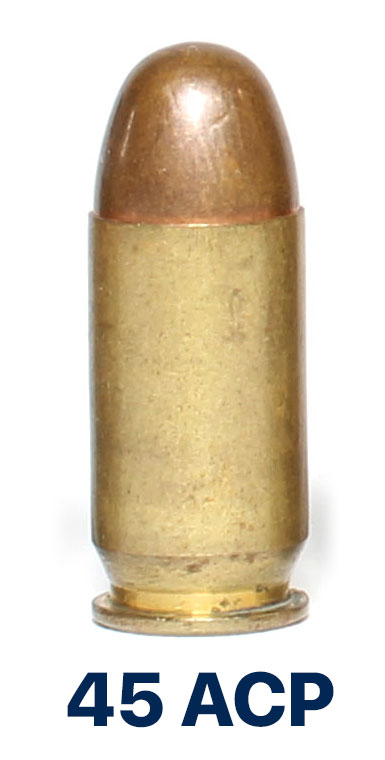
The .45 ACP, or .45 Automatic Colt Pistol, is a type of handgun cartridge. Also known as .45 Auto, the .45 ACP cartridge was originally developed in 1904 by John Moses Browning for use in his new prototype, the Colt semi-automatic pistol. The purpose of designing the .45 ACP was to address the issue of stopping power by the ammunition currently being employed during the Philippine-American War. Stopping power is the ability to cause a target to stop (through incapacitation or immobilization). The ammunition used at the time was not considered lethal enough, and a new type of cartridge was needed. Thus, the .45 ACP’s goal was to increase the stopping power. The cartridge has mostly been replaced in modern-day usage but still finds applications in the realm of large-caliber sports shooting, as well as a few police units that still use the cartridge.
As it was designed for military application, .45 ACP has sufficient stopping power for use against human targets, low muzzle blast and flash, and controllable recoil in full-size firearms. It is a rimless, straight-walled cartridge with a 230-grain bullet. It can travel at approximately 830 feet per second when fired and has a chamber pressure rating of 21,000 psi. This relatively low chamber pressure rating causes the round to be subsonic, eliminating the sound of a sonic boom for suppressed weapons. There are six forms of .45 ACP, each with variations to account for different intended usages. The first is the standard .45 ACP ball M1911, which is the standard full-metal jacket and lead-core bullet. The second is a .45 ACP dummy M1921, which is, as the name indicates, a dummy round. As such, it does not have a primer and has a hole drilled through the case rendering the round inert. Third, there is the .45 ACP blank M9, another nonlethal option that does not have a bullet added to the cartridge.
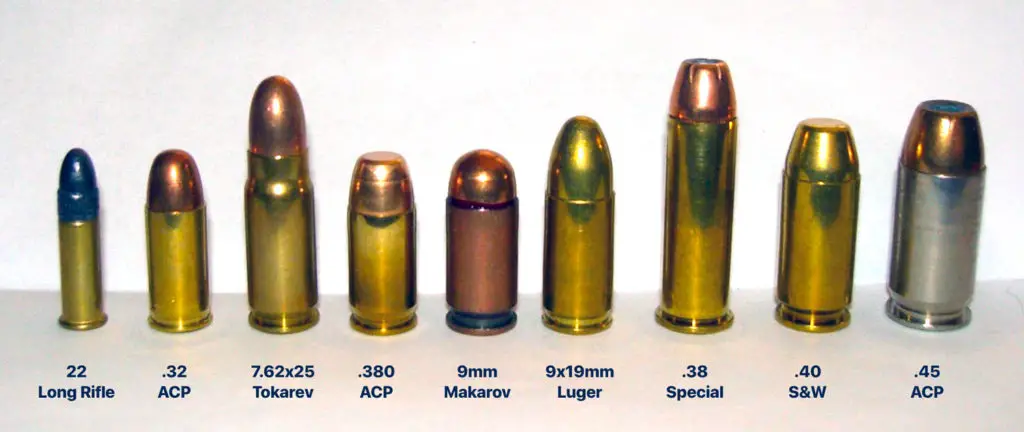
Fourth is the .45 shot M12, which was a survival round with 118 pieces of No. 7 1/2 birdshot in it. This round was issued in the United States Air Force survival kits to equip pilots and aircrews who may find themselves in stranded or emergency situations to hunt small game. This round was, however, replaced by the .45 shot M15, as the M12 had reported issues breaking apart or swelling in high humidity. The M15 version was created to address this issue and replaced the M12 round in the survival kits. Lastly, there is .45 tracer M26, which is a short-range red flare used for emergency signaling.
.45ACP, then, has become something of a workhorse caliber for not only militaries but, in the century since its adoption, law enforcement and civilians as well.
History of the .45 GAP
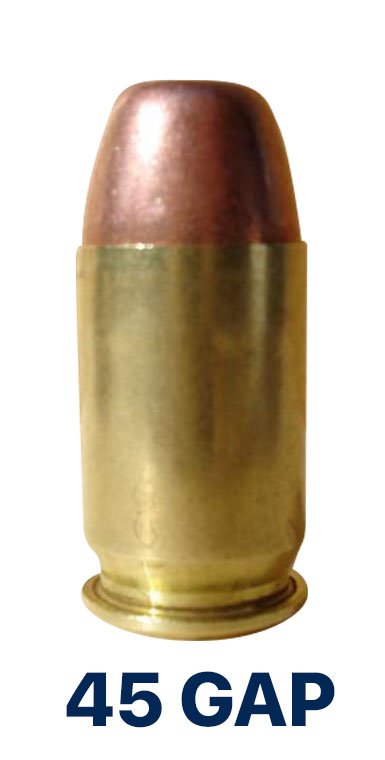
The .45 GAP, or Glock Auto Pistol, was created to act as a rival for the .45 ACP. For an understanding of the timeline involved, it is important to reiterate that .45 ACP was produced in 1905. Glock requested the development of a .45 cartridge to compete with the success of Colt almost a hundred years later, in 2003. While confusing as to why Glock felt the need to produce a round to compete with another that had experienced great popularity and success after almost a hundred years, the manufacture of .45 GAP marked the first commercially produced cartridge to be associated with Glock. The design of the .45 GAP was shorter than the ACP, designed to work in compact handguns. To achieve this, GAP is the same diameter as the ACP but uses a small-pistol primer instead of the large-pistol primer utilized in the ACP round. While the ACP round is 32.4mm, GAP is 27.2 mm. Again with similarities to ACP, GAP is also a straight, rimless cartridge.
GAP was originally designed to be 200-grain weight. However, in order to achieve a ballistic profile to match the ACP round, GAP needed to be put under significantly more pressure. While the ACP standard round functions at 21,000 psi, GAP functions at 23,000 psi. As development continued, it was decided that GAP could also work for 230 grain to directly match the ACP round. While feasible, however, this was at the edge of its capabilities. Glock is the only manufacturer of pistols for .45 GAP, of which there are only three models. These models are the G37 (full-size), G38 (compact), and G39 (subcompact).
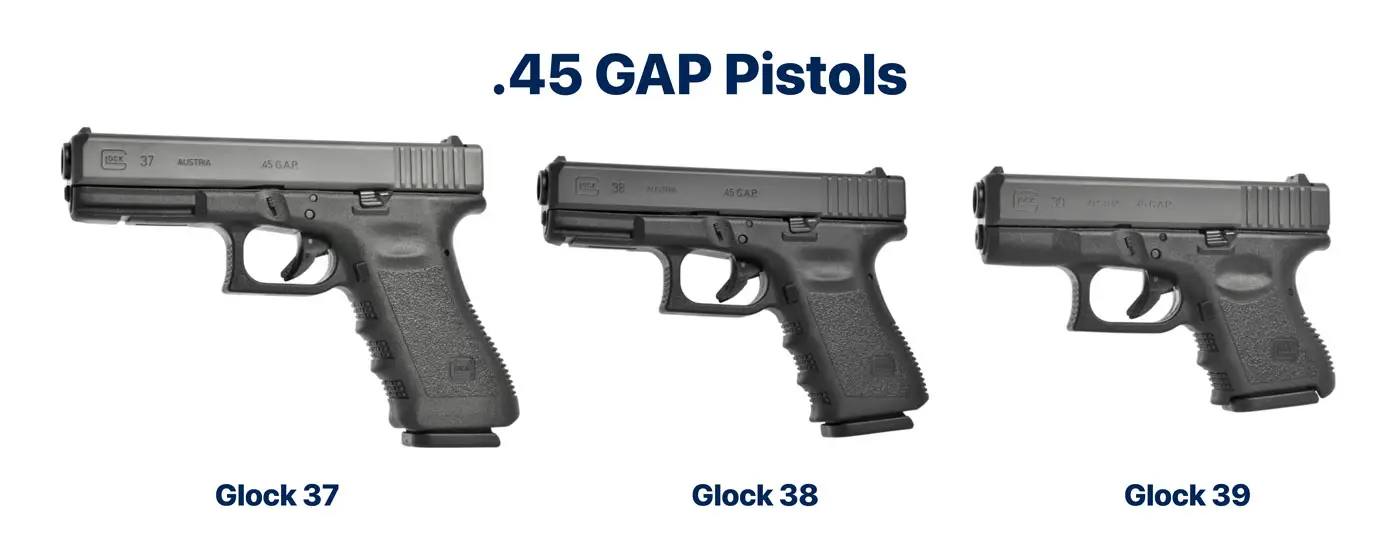
Outside of private ownership and usage, the only institutions to still use .45 GAP are the South Carolina Highway Patrol, the Burden, Kansas police department, the Greenville, North Carolina police department, and the Berkeley, Missouri police department. All other previous institutional users of the round have either moved to the ACP option or to 9mm options. There is still a small group of individuals in the private ownership world that enjoy the .45 GAP round. However, this group is limited to owners and users of the three previously mentioned firearms manufactured by Glock or owners with firearms that were previously produced to accommodate GAP, such as the Springfield Armory XD series.
Comparison & Differences of 45 GAP & 45 ACP
| .45 ACP | .45 GAP | |
| Designed | 1904 | 2002 |
| Case type | Rimless, straight | Rimless, straight |
| Bullet diameter | .452 in (11.5 mm) | .451 in (11.5 mm) |
| Overall length | 1.275 in (32.4 mm) | 1.070 in (27.2 mm) |
| Max Pressure | 21,000 psi (140 MPa) | 23,000 psi (160 MPa) |
Stopping Power
.45 ACP has superior stopping power in comparison to .45 GAP.
To compare stopping power between the two rounds, the best objective measure is to look at the foot-pound force of each round. For firearms in the United States, foot-pound force is used as a measurement for the muzzle energy of a bullet. This is gauged by the energy transferred to an object when a one-pound force hits an object through the distance of one foot. Foot pound-force depends on the bullet mass and type and therefore can vary between ammunition manufacturers.
The average foot pound-force across the types of .45 ACP produced is 532 ft⋅lbf. The average foot pound-force across the types of .45 GAP produced is 483 ft⋅lbf. The highest foot pound-force ammunition manufacture option for .45 ACP is 829 ft⋅lbf . The highest foot pound-force ammunition manufacture option for .45 GAP is 543 ft⋅lbf.
Velocity
.45 ACP has a faster velocity than the .45 GAP.
Comparing the velocity of both rounds provides another helpful metric for comparing the efficacy of both types of .45 cartridges. Velocity here refers to the speed of the projectile. Higher velocity for ammunition doesn’t necessarily equate to better stopping power. For instance, artillery rounds have a much lower velocity than handgun rounds but arguably would produce a drastically more significant amount of stopping power on an individual. That being said, when comparing two rounds that are nearly identical, such as ACP and GAP, then the higher velocity can equate to increased stopping power. Similar to the foot pound-force performance metric, the velocity of each round depends on the ammunition manufacturer.
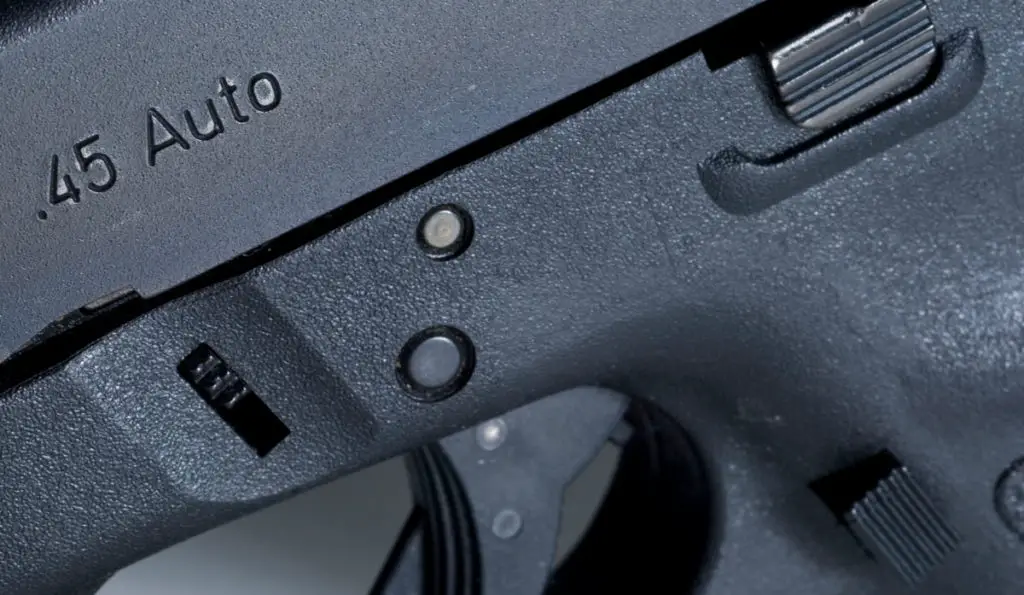
The average velocity across the types of .45 ACP produced is 1,218 m/s. The average velocity across the types of .45 GAP produced is 483 m/s. The highest velocity ammunition manufacture option for .45 ACP is 2,036 m/s. The highest velocity ammunition manufacture option for .45 GAP is 1,150 m/s.
Range
.45 ACP has better range capabilities due to its higher velocity and force.
When dealing with range comparison, most applications of handguns are not in long-range instances. However, based on the previous analysis of the foot pound-force and velocity measurements, the combination of these two factors would provide the .45 ACP with both superior long-range abilities and short-range abilities.
For long-range, the higher velocity round would be able to travel long distances in comparison to the lower velocity round. For short-range, the higher velocity round would have more stopping power as it would have the ability to continue deeper into the target. Specifically, the .45 ACP and GAP rounds were utilized the most by individuals for personal defense or ownership and for law enforcement officers.
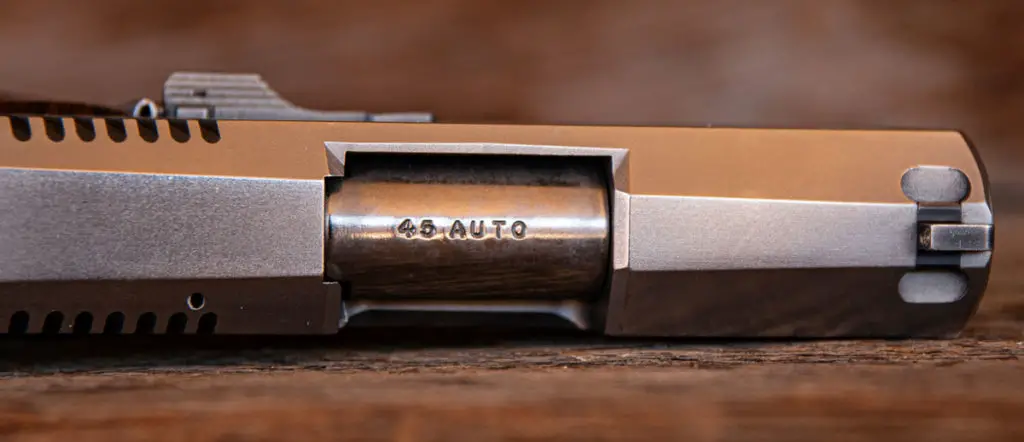
In the case of personal ownership, the .45 ACP would provide the ability to shoot longer ranges in the cases of things like general training, competition, or marksmanship practice. For personal defense, the .45 ACP would also provide the best stopping power option in comparison to the .45 GAP, which would be beneficial for life-threatening or general defense scenarios. For law enforcement, the aim of the round would be for policing/defense purposes. Therefore, the round with the highest stopping power ability would be the best round for law enforcement personnel.
Cost and Availability
.45 ACP is much cheaper than the .45 GAP due to the widespread use of the ACP.
Between the two rounds, the .45 ACP wins out by considerable measures over .45 GAP. Part of the reason for the decline in GAP over the years was on account of the difficulty of procuring the round in the first place. The issues in obtaining ammunition and also drastically increased price over the past few years was the cited reason that most of the law enforcement units still utilizing GAP either switched to .45 ACP or abandoned the .45 caliber entirely for 9mm options instead.
.45 ACP can be widely found both in-stores and online, and at the writing of this article, it goes for about 40 cents a round. .45 GAP, however, is only produced by a few manufacturers and is a lot more expensive. Sellier & Bellot and Speer are the only two manufacturers where .45 GAP can be reliably bought from. The price per round for a .45 GAP is about 70 cents a round. Again, it’s best to keep in mind here that there are only three firearms still commercially produced that use this round. Should Glock move away from these three models, then it is reasonable to expect this round to slowly make its way into complete nonexistence.
FAQ
.45 GAP stands for “Glock Auto Pistol” and was designed by Glock in 2002 to compete with the .45 ACP cartridge. Glock currently sells 3 pistols chambered in .45 GAP.
Conclusion
In conclusion, when looking for a .45 round, .45 ACP is the way to go. It has superior stopping power, is cheaper, more readily available, and is used in a wide array of firearms. In general, the analysis of .45 ACP makes it obvious why .45 ACP is well-known and commonplace, and .45 GAP is considered a rarity and not often heard about.
That being said, despite the obvious superiority of the .45 ACP round, understanding that .45 GAP exists and the history behind it is an interesting part of history. Glock is a well-known and one of the most popular choices for individuals purchasing firearms, especially first-time gun owners. Because of this, knowing what .45 GAP is and that it is very niche ammunition at this point in time can be helpful information to help prevent an unknowing individual from purchasing .45 GAP simply due to its association with Glock.
As time progresses, it will be an interesting opportunity to see if Glock decides to stop manufacturing the remaining three firearms that use .45 GAP or if the law enforcement units that still utilize .45 GAP decide to switch to .45 ACP or move to 9mm entirely. While it’s not likely that you’ll see anyone carrying or using .45 GAP any time soon, it’s an interesting piece of contemporary firearms history at the very least!
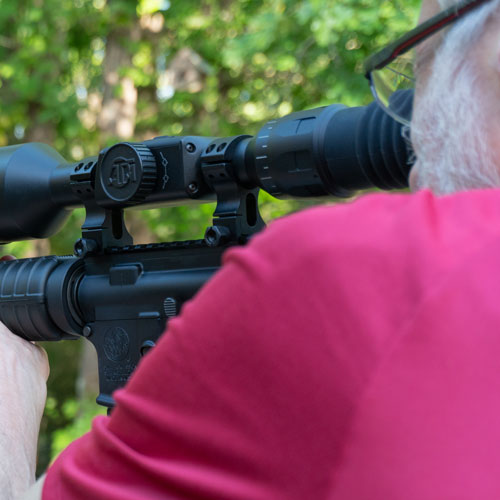
George has been an avid shooter for twenty years. He began shooting when he was gifted a Browning SA-22 for target practice. Now, as an academic, he combines his love of firearms and knowledge of history to write for firearms blogs and is still a frequent sight at the local range.
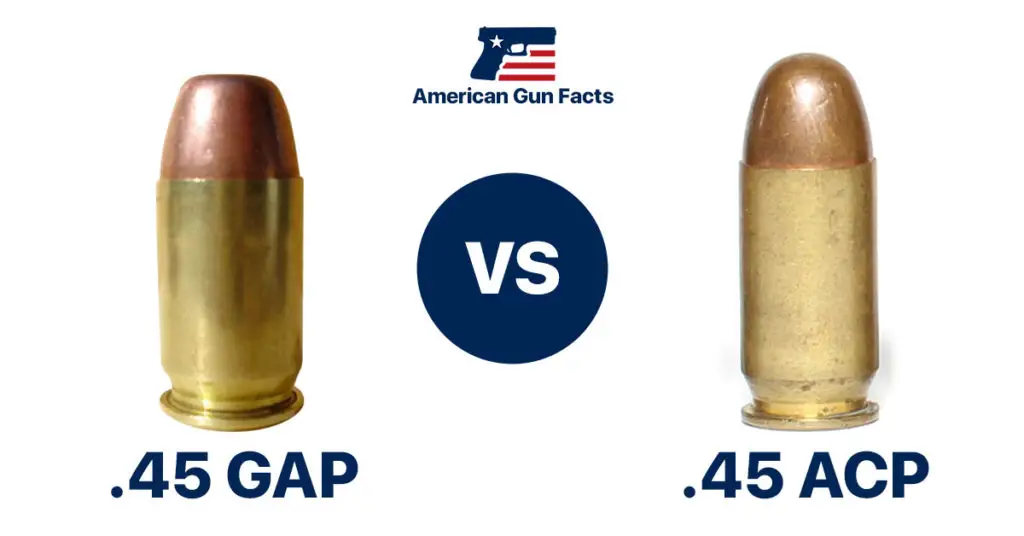
Have you read the ballistics table?
Take Speer gold dot.
45gap 185gr 1090fps 488 foot pounds of energy.
45 acp 185gr 1050 do’s and 453 foot pounds.
The results are the same for most commercial ammo in the 185gr and 200gr.
It’s not much difference but 1090 is more than 1050.
If you don’t like 45gap that’s ok but please don’t mislead people into thinking it inferior to 45 acp in performance.
The two are nearly identical in performance
You have to go to +p ammo in 45 acp to get the velocity that may beat 45gap. (45gap operates at 23,000 pressure, 45 acp at 21,000)
And any 45 acp ammo that’s moving at 1,218 fps must weigh only 40 grains, and the same weight projectile fired from a 45gap would achieve similar velocities.
45gap nay be harder to find than 45 acp but it’s priced about the same.
It is a modern fully functional large bore cartridge that can make a great self defense round!